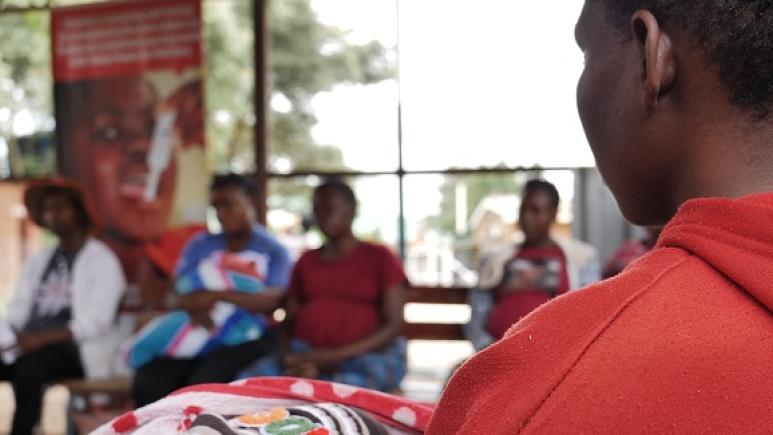Towards a more accurate diagnosis of Sexually Transmitted Infections among Adolescents in Zimbabwe
Every day, more than a million people worldwide contract a sexually transmitted infection (STI) (1). Four of the most common STIs are curable: syphilis, gonorrhoea, chlamydia and trichomoniasis. If left untreated, STIs can lead to numerous complications for those who have contracted them, as well as for babies born from mothers with STIs. Adolescents are often exposed to STIs, and this is exacerbated in low- and middle-income countries (2). It is therefore important to improve their access to sexual and reproductive health (SRH) services.
In 2015, in collaboration with the Zimbabwean Ministry of Health and other Non-Governmental Organizations, MSF opened an "Adolescents Corner" at the Edith Opperman Polyclinic in Mbare, the most densely populated area of Harare, the capital of Zimbabwe. This centre offers free comprehensive sexual and reproductive health services to adolescents and young people aged between 10 and 24 years.
An often inaccurate diagnosis
“One of the challenges with STIs is their diagnosis, which is currently based solely on symptoms, explains Doctor Collen Nyatsambo, District Medical Officer, Harare Southern District, Ministry of Health.
Due to inaccessibility and/or cost of laboratory tests in low- and middle-income countries, STIs’ treatment is guided by clinical algorithms based on signs and symptoms (Syndromic approach). With this approach, treatment can be offered on the same day, but with the risk of underdiagnosing and undertreating a significant number of patients. This is because when STIs’ symptoms do appear, which is not always the case, they are often not very specific. It is estimated that syndromic algorithms identify only 50% of the STIs.
“This makes a symptom-based diagnostic approach sometimes difficult for clinicians. adds Collen Nyatsambo Our project assesses the added value and feasibility of two types of diagnostic tests for STIs in adolescents.”
The introduction of a relatively easy to implement and perform laboratory test could improve the accuracy of diagnosis. This study, conducted jointly by the Zimbabwean Ministry of Health, MSF and Epicentre, aims to measure the operational feasibility and added value of diagnosis using the GeneXpert CT/NG for Chlamydia trachomatis and Neisseria gonorrhoeae infections and the OSOM® Trichomonas test for trichomoniasis. These two tests are performed on urine and swab samples, do not require highly specialised laboratory skills and give results within 90 minutes for the GeneXpert and 10 minutes for the OSOM® test.
"The results of the OSOM® rapid test are compared with the reference PCR test to determine the diagnostic performance of using urine samples, particularly for men, compared with the recommended vaginal smears for women. Laboratory cultures are also be taken to test the sensitivity to antibiotics of Neisseria gonorrhoeae, the bacterium responsible for gonorrhoea, which is increasingly resistant to antibiotic treatments, including third generation cephalosporins, the 'last-line' treatment for this STI," explains Andrew Tarupiwa, principal investigator of the study, National Medical Reference Laboratory, Zimbabwe.
A total of 400 adolescents aged 16 to 19 who had been sexually active in the previous 12 months will be included in the study. In practical terms, adolescents presenting symptoms will be offered treatment on the same day following diagnosis using the syndromic approach. If necessary, they will then be contacted again to adapt the treatment according to the results of the additional tests. During the medical consultation, each teenager will be given advice on safe sexual practices.
To identify sexual partners who need to be treated, the traditional approach encourages people with a positive diagnosis to inform their partners for them to seek treatment. In the study, participants will receive a card for themselves and for their partners with instructions in Shona on how to get to the clinic so they can access treatment.
While the syndromic approach to diagnosis has the advantage of being simple, inexpensive and enabling same-day treatment, its limitations in terms of under-treatment, inappropriate treatment and even lack of treatment argue in favor of introducing more accurate tests to support diagnosis.
"With this study, we hope to be able to demonstrate the feasibility and performance of two rapid and relatively simple diagnostic tests, GeneXpert CT/NG and OSOM® Trichomonas, for detecting STIs," says Maria Lighthowler, epidemiologist at Epicentre and co-responsible for this study.
It should also determine the prevalence of 3 very common STIs and their resistance to antibiotics in teenagers who come to the Adolescent SRH’s corner at the Edith Opperman Polyclinic in Mbare, Zimbabwe.
The results of this study are expected in early 2024. They will help clinicians in Zimbabwe and in other parts of the world provide better care to adolescents.
- https://www.who.int/fr/news-room/fact-sheets/detail/sexually-transmitted-infections-(stis)
- https://www.who.int/publications/i/item/9241562889
© Dorothy Meckafro/Vision Trust









